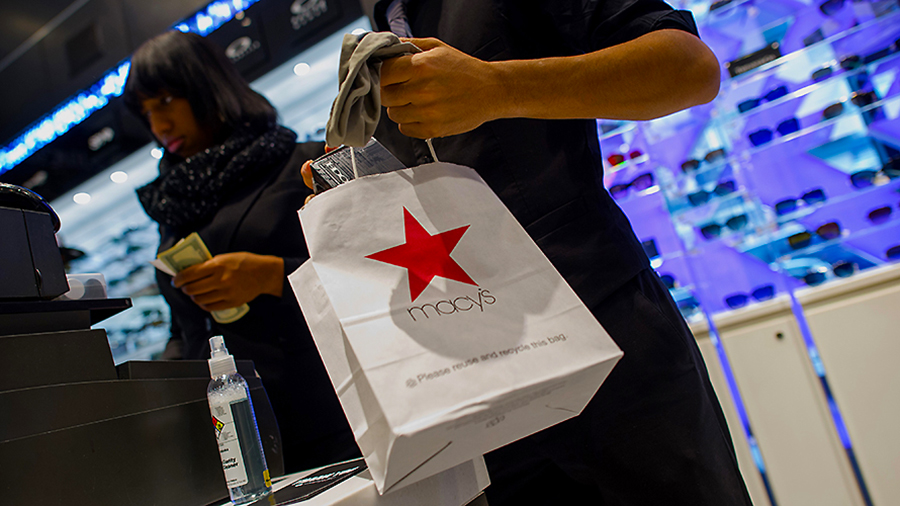Macy’s, Inc. reported same-store sales in the second quarter were down 34.7 percent but were better than expected as in-store sales recovered faster-than-expected and online sales jumped 53 percent. The second-quarter loss that was was better than Wall Street’s estimates.
“Macy’s, Inc.’s performance for the quarter was stronger than anticipated across all three brands: Macy’s, Bloomingdale’s and Bluemercury, driven largely by the sales recovery of our stores. Restarting our stores’ business was our top priority, and we successfully accomplished that while also ensuring that our digital business remained strong. Going into this crisis, we had a well-developed digital business and we’re seeing that thrive as we attract new and welcome existing customers back to our brands,” said Jeff Gennette, chairman and chief executive officer of Macy’s, Inc. “We’ve put significant focus on enhanced health and safety standards which have allowed our customers and colleagues to feel safe in our stores and facilities. I want to thank our colleagues for the tremendous effort that has been put into recovering our business.
“We are encouraged by our second-quarter performance; however, we continue to approach the back half of the year conservatively. Our immediate priority is successfully executing Holiday 2020. We are also focused on laying the groundwork for 2021 and beyond. We plan to invest in fashion, digital and omnichannel, work with agility, and galvanize the resources of the company to serve our customers and move the Macy’s, Inc. business forward,” Gennette continued.
Second Quarter Highlights
- Overall sales were down 35.8 percent to $3.56 billion from $5.55 billion a year ago. Sales were generally in line with Wall Street’s consensus estimate of $3.5 billion.
- Comparable sales were down 34.7 percent on an owned basis and down 35.1 percent on an owned plus licensed basis, due to faster-paced store recovery than originally modeled and better than expected growth of its digital business.
- Digital sales remained strong, growing 53 percent over the second quarter of 2019. Digital sales penetrated at 54 percent of the total owned comparable sales.
- Delivered gross margin of 23.6 percent, an improvement of approximately 650 basis points from the first quarter 2020 due to improved retail margins from the mix and better sell-through of clearance merchandise.
Inventory was down 29 percent from a year ago, allowing the company to exit the second quarter in a clean inventory position. - Selling, general and administrative (“SG&A”) expense of $1.4 billion, down $779 million from the second quarter last year, illustrating efficient expense management associated with the swift actions undertaken in response to the COVID-19 pandemic as well as execution against our Polaris strategy. SG&A expense rate of 39.2 percent, was relatively consistent with the prior year.
- The net loss came to $431 million, or 1.39 a share, against earnings of $86 million, or 28 cents, a year ago.
- On an adjusted basis, the loss came to $251 million, or 81 cents a share, against net income of $88 million, or 28 cents, a year ago. Results easily topped Wall Street’s consensus estimate calling for a loss of $1.78.
- EBITDA on an adjusted basis showed a loss of $142 million against earnings of $402 million a year ago.
- Finished the quarter in a strong liquidity position with approximately $1.4 billion in cash and approximately $3 billion of untapped capacity in the company’s new asset-based credit facility.
2020 Guidance
The company previously withdrew its 2020 sales and earnings guidance and is not currently providing an updated outlook due to ongoing uncertainty as a result of COVID-19.














